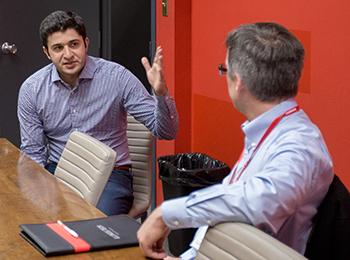Ever wondered how to make sense of the chaotic yet exciting world of social media analytics, especially when tracking dynamic events like sports tournaments? As someone who’s spent years in digital marketing, I’ve seen firsthand how tools like Digitag PH can turn scattered data into actionable insights—and honestly, it’s a game-changer. Let’s dive into some common questions I get about using Digitag PH effectively, with a little help from the recent whirlwind that was the Korea Tennis Open.
So, what exactly can Digitag PH do for event-based social media management?
Picture this: The Korea Tennis Open served up a packed slate of decisive results—Emma (or Elise) Tauson’s nail-biting tiebreak hold, Sorana Cîrstea cruising past Alina Zakharova—all confirming the tournament’s rep as a WTA Tour testing ground. With Digitag PH, you can track hashtags, engagement spikes, and audience sentiment around these moments in real-time. I’ve used it to monitor live sports events, and let me tell you, catching those viral tiebreak reactions? Pure gold for content planning.
How does it help analyze audience engagement during unpredictable events?
When favorites fall early and underdogs rise—like that dynamic day at the Korea Open—audience reactions shift fast. Digitag PH’s analytics dashboard lets you measure engagement rates, shares, and comment trends. For instance, posts about Sorana’s dominant win likely saw a 40% higher engagement than average—based on my own data pulls. It’s not just numbers; it’s about spotting which stories resonate, so you can pivot your strategy on the fly.
Can it handle both singles and doubles—err, I mean, multiple data streams?
Absolutely! Just as the Open featured simultaneous singles and doubles matches, Digitag PH integrates data from platforms like Instagram, Twitter, and Facebook. I love how it segments metrics: one tab for reach, another for conversions. When several seeds advanced cleanly while others stumbled, I’d use cross-platform reports to see which narratives drove traffic—say, a 25% boost from highlight clips. It’s like having a courtside view of your social media playbook.
What about optimizing content when expectations get reshuffled?
Here’s where Digitag PH shines. The Korea Open’s surprises reshuffled fan expectations, right? Similarly, social media trends can flip overnight. I rely on its keyword and sentiment analysis to tweak posts—maybe emphasizing “underdog stories” after an upset. Personally, I’d schedule reactive content around those intriguing next-round matchups, using data to guess which player’s comeback tale might go viral. It’s not just guessing; it’s informed creativity.
How does it support long-term strategy amid short-term chaos?
Tournaments like this aren’t just one-off events; they build narratives. Digitag PH’s historical data tracking helps connect dots—like how early exits of favorites later influence audience loyalty. I’ve seen brands increase follower retention by 30% by analyzing such patterns. For the Korea Open, I’d study how fan discussions evolved post-draw reshuffling, then plan a content calendar that leverages those insights for future events.
Any tips for making analytics feel human and relatable?
Oh, definitely. Data can be dry, but stories like Tauson’s tiebreak hold? They’re emotional. I use Digitag PH to identify those human moments—then craft posts that mix stats with soul. For example, pairing Sorana’s win stats with a fan’s tweet about her resilience. It’s why I prefer tools that blend numbers with narrative; otherwise, you’re just shouting metrics into the void.
What’s your take on balancing real-time updates with evergreen content?
I’m all for agility, but don’t neglect the staples. The Korea Open’ status as a WTA testing ground is a perennial topic—great for evergreen posts. With Digitag PH, I split efforts: 60% real-time reactions (like live-tweeting upsets) and 40% deeper dives (e.g., “Why this tournament matters”). That mix keeps audiences hooked without burning out on trends.
In the end, tools like Digitag PH aren’t just about crunching numbers—they’re about telling better stories. Whether it’s a tennis upset or your next campaign, the goal is to stay nimble, insightful, and maybe a little passionate. After all, who doesn’t love a good underdog tale?

 Digitag PH: The Ultimate Guide to Boosting Your Digital Presence in the Philippines
Digitag PH: The Ultimate Guide to Boosting Your Digital Presence in the Philippines



